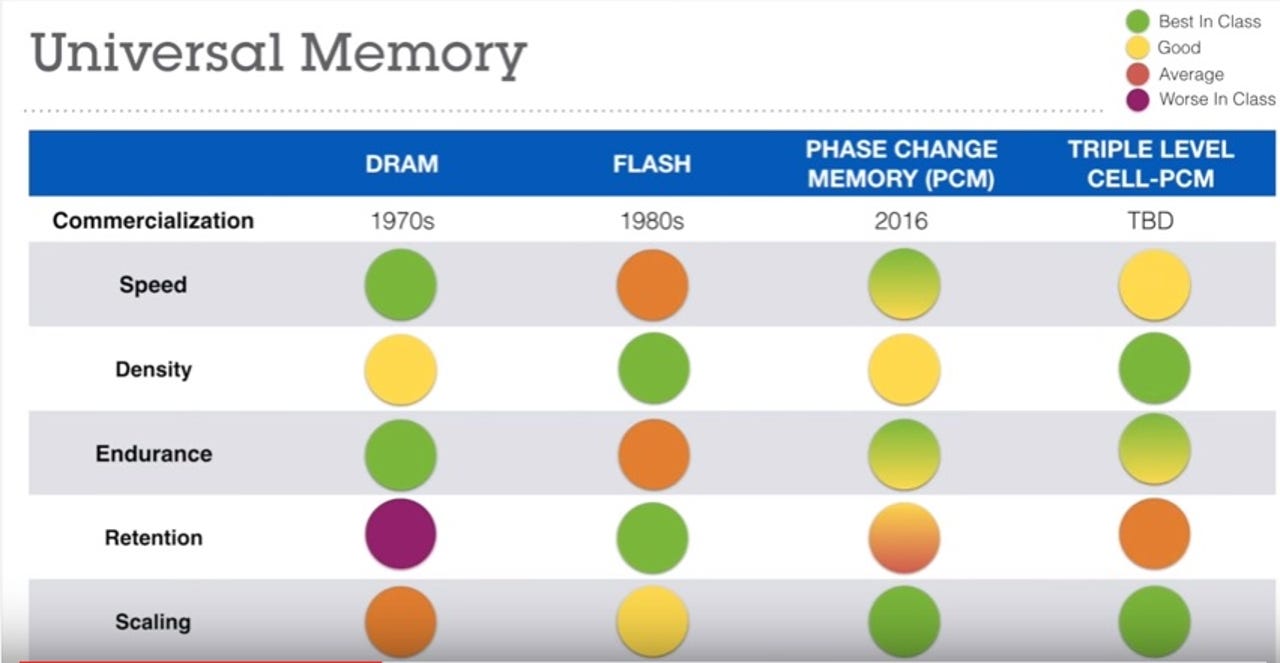IBM's phase-change memory breakthrough brings DRAM speed at lower costs

IBM scientists have achieved a breakthrough in phase-change memory (PCM), developing storage capabilities with the speed and endurance of DRAM that also come close to matching the low-cost density of flash.
The research team presenting in Zurich on Tuesday has successfully stored 3 bits of data per cell in PCM, surpassing the previous limit of 1 bit per cell in PCM.
"Phase change memory is the first instantiation of a universal memory with properties of both DRAM and flash, thus answering one of the grand challenges of our industry," Haris Pozidis, an author of the paper and the manager of non-volatile memory research at IBM Research in Zurich, said in a statement.

PCM has some clear advantages over the current memory landscape. For instance, it doesn't lose data when powered off as DRAM does, and it can at endure at least 10 million write cycles while an average USB stick can handle around 3,000.
IBM says it envisions standalone PCM applications, as well as combining PCM and flash storage. For instance, a mobile phone OS could be stored in PCM, allowing the device to launch in just a few seconds. Meanwhile, entire enterprise databases could be stored in PCM for faster query processing, and machine learning algorithms could speed through large datasets.
PCM technology works by applying high or low electrical currents to glass-like material. A high or medium electrical current is applied to the material to store bits. To read the bit back, a low voltage is applied. This is how re-writable Blu-ray discs store videos.
To achieve multi-bit storage, IBM scientists developed a set of drift-immune cell-state metrics, as well as drift-tolerant coding and detection schemes.